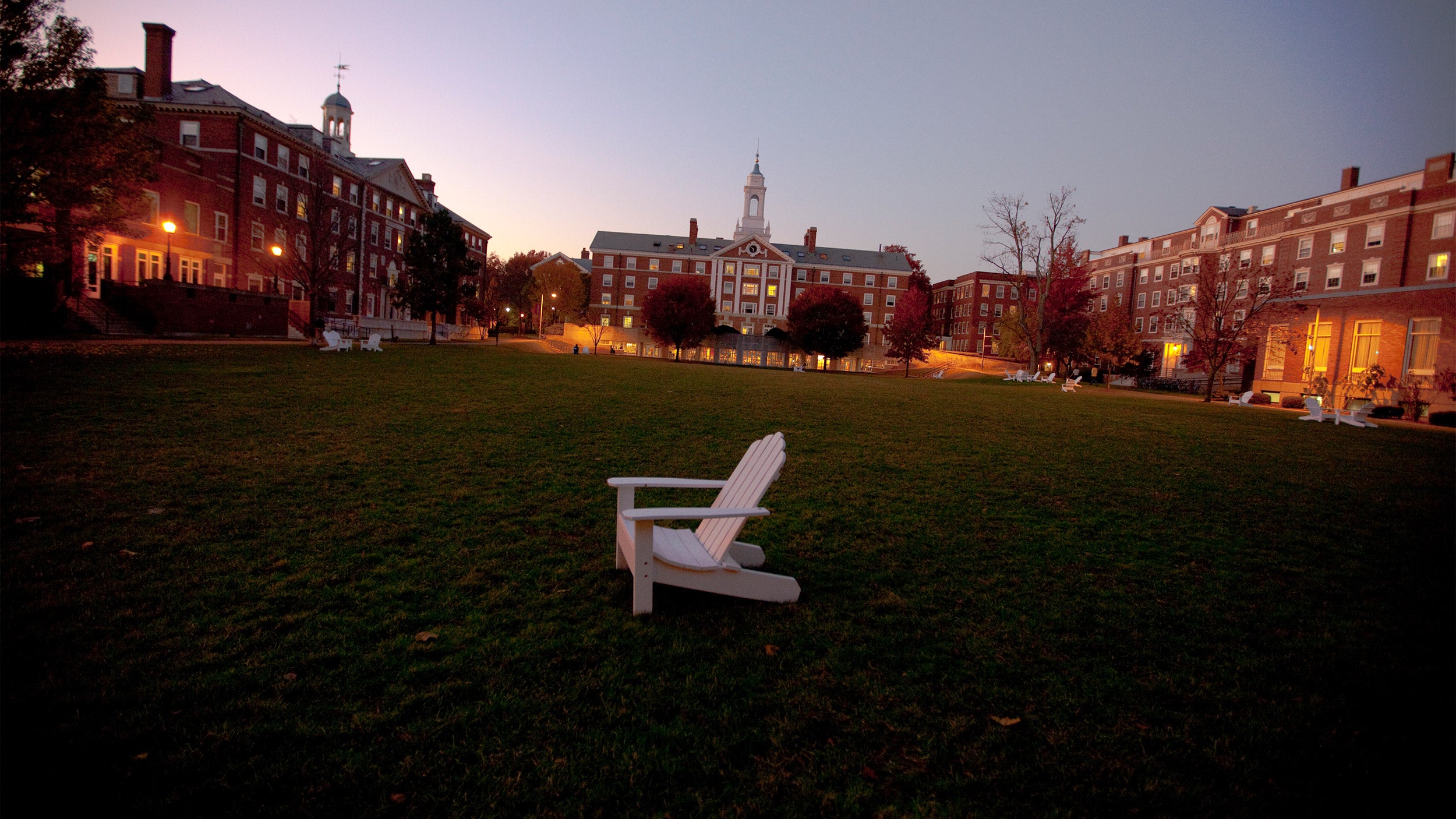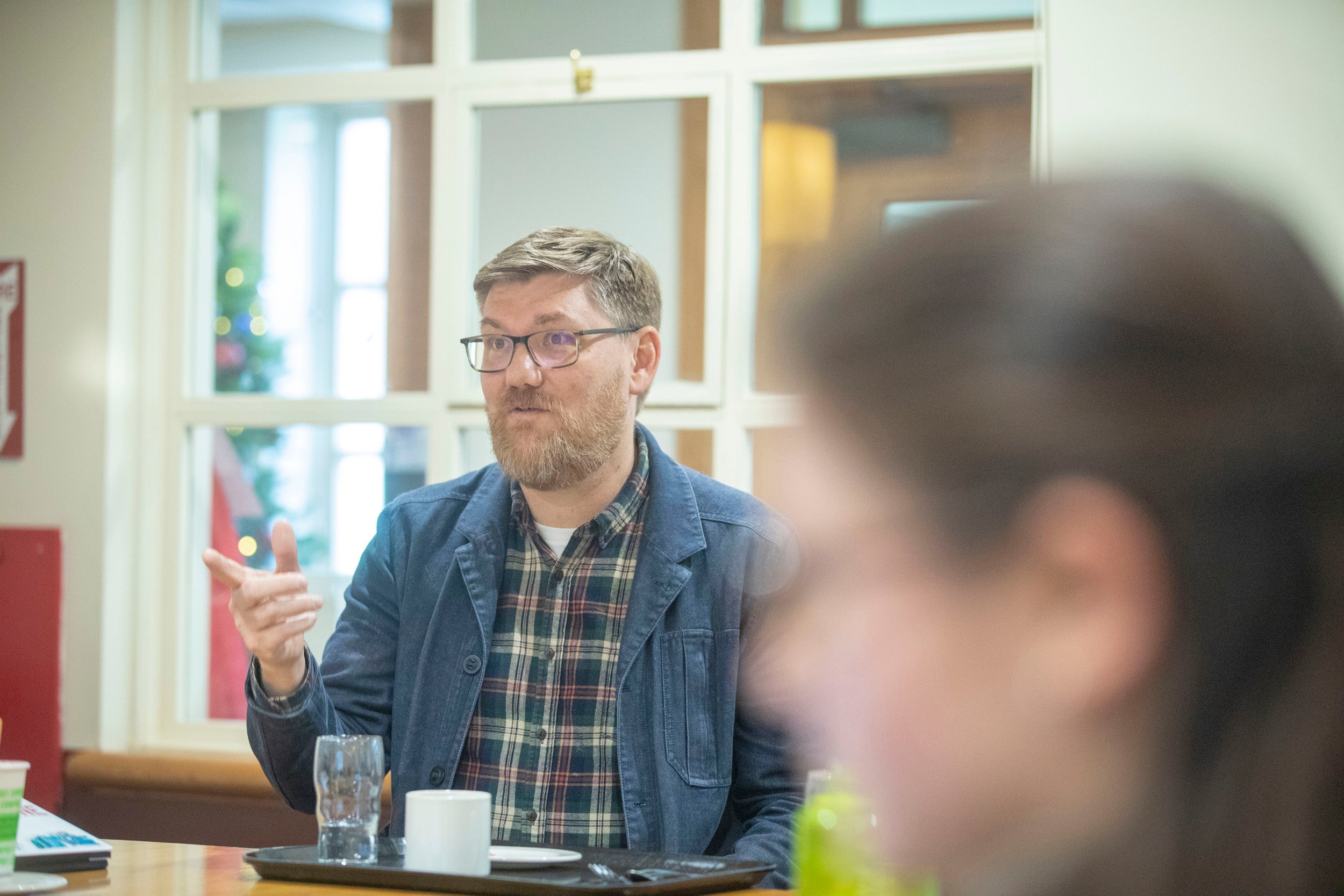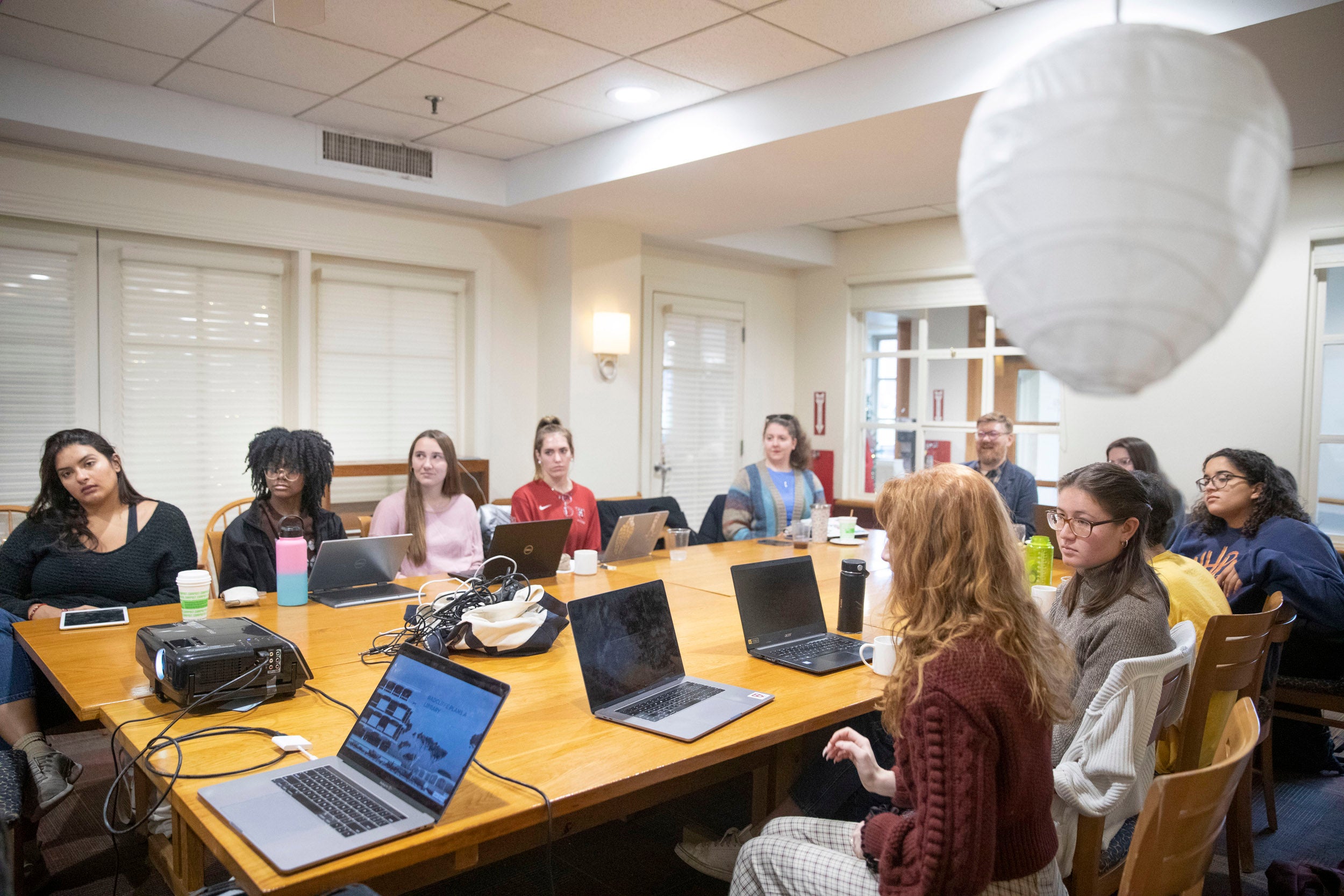Biography of a place

The Radcliffe Quad with its three Houses: Currier, Pforzheimer, and Cabot.
File photo by Rose Lincoln/Harvard Staff Photographer
New class unearths forgotten history of Quad, explores paths of everyday lives, hidden places
Harvard junior Zane Jones became immediately captivated when looking through the scrapbook of Marion Hathway.
The collection of notes, photographs, newspaper clippings, exams, and grades documents Hathway’s senior year at Radcliffe College. A student there from 1912 to 1916, the future social worker and educator’s scrapbook documents the active role she took in women’s suffrage, marching for the vote and speaking to voters on election day.
Jones, a Mather House resident, came across other scrapbooks at the Schlesinger Library from women around that same time, which she eventually focused into a six-page research paper. The assignment, which was part of a new class looking at the history of everyday life at Harvard, helped bring Jones a new appreciation for how people can document their own histories, especially when it comes to places people call home.
“Looking through these women’s scrapbooks, I could see how they used these scrapbooks as a means of claiming their own agency,” Jones said. “This documentation can serve as a history of the culture of Radcliffe at the time.”
This kind of thoughtful interaction with the past is what Harvard history professor and Faculty Dean of Cabot House Ian Miller hoped for when he designed HIST 15B, “Quad Lab: Histories of Technology, Society, and Everyday Life at Harvard.”
The course focuses on the lives of students who have lived on the Radcliffe Quadrangle, how Radcliffe and the Quad were designed, major events and evolution of the residential space, and even the inner workings of the buildings themselves.
Formerly the residential campus of Radcliffe College, today the Quad has the look of a traditional college quad bordered by three Houses: Currier, Pforzheimer, and Cabot. It is home to approximately 1,225 undergraduates and 81 staff members and families.
The new course runs like a scientific laboratory where students break down parts of everyday life to understand how they came to be. They have taken guided tours of many prominent spaces, like the libraries, and examined less familiar, more hidden aspects. This has included investigating individual pieces of furniture.


Harvard history professor and Faculty Dean of Cabot House Ian Miller teaches “Quad Lab: Histories of Technology, Society, and Everyday Life at Harvard.” The course focuses on the lives of students who have lived on the Radcliffe Quadrangle, how Radcliffe and the Quad were designed, major events and evolution of the residential space, and even the inner workings of the buildings themselves.
Photos by Kris Snibbe/Harvard Staff Photographer
Cabot House, for instance, where part of the course is based, has more grand pianos per capita than any other House at Harvard. Hannah Thurlby ’23 is studying why there are so many and where they came from. The trail quickly led to reflections on ties between femininity and shifting values, with her research showing that a proper Radcliffe woman in 1879, the time of the School’s founding, was expected to have musical abilities.
The overarching goal of the class is to understand that everything has history and that by living in the space where that history took place, people can connect with it. Sometimes that past is difficult, Miller said.
It’s why part of the course has been spent reading documents on gender at Harvard, such as reactions by students when Radcliffe and Harvard began merging, and the history of race and slavery at Harvard, including reading the report on Harvard & the Legacy of Slavery.
“History is not a story of simple celebration. History is difficult; it is painful; it is contested,” Miller said. “It requires us to step back and look at ourselves differently, to really test our assumptions. For our students — these incredibly intelligent young people who are going to go on to be teachers, CEOs, inventors, artists, businesspeople — they need that capacity to be able to step back and look at their place in their world critically.”
The 12-person course splits its time between Cabot and the Schlesinger Library at the Radcliffe Institute. Miller wanted the class to be based at Cabot so it could have a strong sense of place, and to bring academic learning back to residential spaces. He sees Harvard Houses as unique entities in higher education where the College can flex its holistic approach to student learning and care.
“They allow us to bring the strengths of the College and University into students’ everyday lives in ways that really make good on the promise of the College’s mission of personal transformation, social transformation, and intellectual transformation,” Miller said. “Learning and discussion and engagement in this informal setting can be more transformative in certain ways and allow for a different genre of learning than in a formal classroom setting.”
Miller connected with building manager Mike Russell and maintenance operator John Sabbio at Cabot and organized a behind-the-scenes tour of the boiler system, underground tunnels, and a trip to the roof for a birds-eye view of the Quad. For students, this was one of the most poignant moments of the course.
“It was a field trip, but it was a field trip in order to look at the spaces that we take for granted and look at them in a new perspective,” said Cabot House resident Sarida Morejon ’23. “I think we all realized that this was not going to be a normal classroom setting where we read things and talk about them and that’s all that we do. It was very much, ‘OK, this is going to be interactive.’”
Students primarily did research at Schlesinger’s archives but were also able to visit the University Archives. At the libraries they looked at old movies, scrapbooks, and diplomas, including the one for the first Black graduate from Harvard College, Richard T. Greener. They also saw some of the earliest records from Harvard that marked its founding.
“We are always eager to connect students with materials that support their coursework,” said Sarah Hutcheon, a research librarian at Schlesinger.
Students choose their own research paths for their final project. Morejon is looking at the history of the first Black women who lived in Radcliffe dorms after the School began admitting African American students in 1925. “Was it a welcoming place?” Morejon wondered. “Did they experience any discrimination? How did they survive and thrive at Radcliffe?”
Chloe Becker, a sophomore who will concentrate in history, is still deciding her topic: either the physical land of the Quad itself or theater clubs at Radcliffe College, focusing on students who took male roles men in plays and how that disappeared when the School joined with Harvard.
“It’s all yet to be determined,” said the Currier House resident, who thinks her indecision reflects how much she’s enjoyed learning about Radcliffe, the Quad, and history she hadn’t considered before.
“It’s not always going to be the case in life where we can just be like, ‘Oh, I wonder what the history of this place is? Let me go write it myself,’” Becker said.




